No one leaves home unless home is the mouth of a shark.
– Warsan Shire
Every person has their individuality characterized by their human rights, social rights, rights provided by their respective governments and their nationality. People choose their representatives with the hope of new and positive changes, growth and development in all aspects and aspire to a brighter future. However, often these representatives fail to fulfil their duties and their citizens are left with no choice but to leave their entire lives behind and seek a safe space for themselves and their loved ones and have to face a lot of hardships constantly questioning their decisions, choices, lives and existence. These people, often judged for their caste, creed, race, religion as well as nationality are referred to as refugees, asylum seekers, internally displaced person (IDP) and stateless person.
Who is a Refugee?
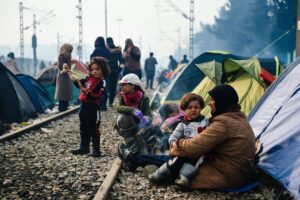 A refugee is someone who has been forced to flee his or her country because of persecution, war or violence. A refugee has a well-founded fear of persecution for reasons of race, religion, nationality, political opinion or membership in a particular social group. Most likely, they cannot return home or are afraid to do so. War and ethnic, tribal and religious violence are leading causes of refugees fleeing their countries.
A refugee is someone who has been forced to flee his or her country because of persecution, war or violence. A refugee has a well-founded fear of persecution for reasons of race, religion, nationality, political opinion or membership in a particular social group. Most likely, they cannot return home or are afraid to do so. War and ethnic, tribal and religious violence are leading causes of refugees fleeing their countries.
69% of those displaced across borders come from just five countries: Syria, Venezuela, Afghanistan, South Sudan and Myanmar.
Who is an Asylum Seeker?
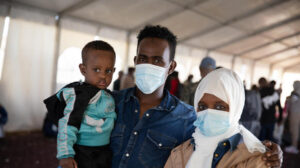 When people flee their own country and seek sanctuary in another country, they apply for asylum – the right to be recognized as a refugee and receive legal protection and material assistance. An asylum seeker must demonstrate that his or her fear of persecution in his or her home country is well-founded.
When people flee their own country and seek sanctuary in another country, they apply for asylum – the right to be recognized as a refugee and receive legal protection and material assistance. An asylum seeker must demonstrate that his or her fear of persecution in his or her home country is well-founded.
Who is an Internally Displaced Person (IDP)?
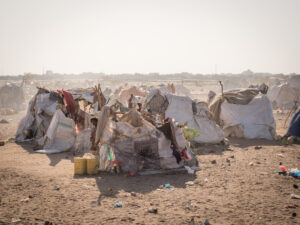 An internally displaced person, or IDP, is someone who has been forced to flee their home but never cross an international border. These individuals seek safety anywhere they can find it—in nearby towns, schools, settlements, internal camps, and even forests and fields. IDPs, which include people displaced by internal strife and natural disasters, are the largest group that UNHCR assists. Unlike refugees, IDPs are not protected by international law or eligible to receive many types of aid because they are legally under the protection of their own government.
An internally displaced person, or IDP, is someone who has been forced to flee their home but never cross an international border. These individuals seek safety anywhere they can find it—in nearby towns, schools, settlements, internal camps, and even forests and fields. IDPs, which include people displaced by internal strife and natural disasters, are the largest group that UNHCR assists. Unlike refugees, IDPs are not protected by international law or eligible to receive many types of aid because they are legally under the protection of their own government.
Countries with some of the largest internally displaced populations are Colombia, Syria, the Democratic Republic of the Congo and Yemen.
Who is a Stateless Person?

A stateless person is someone who is not a citizen of any country. Citizenship is the legal bond between a government and an individual and allows for certain political, economic, social and other rights of the individual, as well as the responsibilities of both government and citizen. A person can become stateless due to a variety of reasons, including sovereign, legal, technical or administrative decisions or oversights. The Universal Declaration of Human Rights underlines that “Everyone has the right to a nationality.”
The true extent of statelessness is estimated to be much higher than estimated, as fewer than half of all countries in the world submit any data and some of the most populous countries in the world with large suspected stateless populations don’t report statelessness at all.
Refugees Around the World:
According to the United Nations High Commissioner for Refugees (UNHCR), the global number of forcibly displaced people, which includes both refugees and internally displaced persons (IDPs), surpassed 80 million by the end of 2020. This figure includes people who were displaced due to conflict, persecution, violence, or human rights violations.
 As of my knowledge cutoff in September 2021, there were millions of refugees around the world. According to the United Nations High Commissioner for Refugees (UNHCR), the global number of forcibly displaced people, which includes both refugees and internally displaced persons (IDPs), surpassed 80 million by the end of 2020. This figure includes people who were displaced due to conflict, persecution, violence, or human rights violations.
As of my knowledge cutoff in September 2021, there were millions of refugees around the world. According to the United Nations High Commissioner for Refugees (UNHCR), the global number of forcibly displaced people, which includes both refugees and internally displaced persons (IDPs), surpassed 80 million by the end of 2020. This figure includes people who were displaced due to conflict, persecution, violence, or human rights violations.
Several regions have been heavily affected by refugee crises. For instance, the ongoing war between Ukraine and Russia has resulted in one of the largest refugee populations globally, with millions of Ukrainians seeking refuge in neighbouring countries and beyond. Similarly, countries like Afghanistan, Syria, South Sudan, Myanmar, and Somalia have also experienced significant displacements.
 In addition to these acute situations, protracted refugee situations exist in various parts of the world, where refugees have been displaced for years or even decades without finding a durable solution. These protracted situations are prevalent in countries such as Pakistan, Iran, Ethiopia, Uganda, and Kenya.
In addition to these acute situations, protracted refugee situations exist in various parts of the world, where refugees have been displaced for years or even decades without finding a durable solution. These protracted situations are prevalent in countries such as Pakistan, Iran, Ethiopia, Uganda, and Kenya.
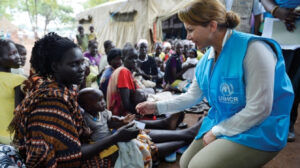 The burden of hosting refugees is often carried by neighbouring countries or those in close proximity to conflict zones. Countries like Turkey, Pakistan, Uganda, Colombia, and Bangladesh have hosted large numbers of refugees, demonstrating significant generosity and resilience in providing assistance and support.
The burden of hosting refugees is often carried by neighbouring countries or those in close proximity to conflict zones. Countries like Turkey, Pakistan, Uganda, Colombia, and Bangladesh have hosted large numbers of refugees, demonstrating significant generosity and resilience in providing assistance and support.
Addressing the needs of refugees requires international cooperation, humanitarian assistance, and efforts to find sustainable solutions. It involves supporting host communities, advocating for the rights of refugees, promoting peace and stability, and addressing the root causes of displacement. The global community continues to work towards finding comprehensive solutions and ensuring the protection and well-being of refugees worldwide.
Global Trends At-a-Glance:
By the end of 2021, 89.3 million people were forcibly displaced worldwide as a result of persecution, conflict, violence or human rights violations. This includes:
- 27.1 million refugees
- 53.2 million internally displaced people
- 4.6 million asylum seekers
- 4.4 million Venezuelans displaced abroad
As of May 2022, 100 million individuals were forcibly displaced worldwide. This accounts for an increase of 10.7 million people displaced from the end of the previous year, propelled by the war in Ukraine and other deadly conflicts.
Refugees in India:
As of 31 January 2022, more than 46,000 refugees and asylum-seekers are registered with UNHCR India, mainly from Myanmar and Afghanistan.
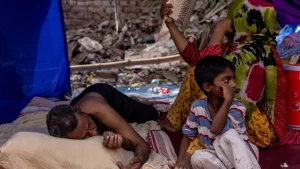 Refugees and asylum-seekers in India primarily live in urban settings alongside host communities. 46% of the refugees are women and girls, and 36% are children.
Refugees and asylum-seekers in India primarily live in urban settings alongside host communities. 46% of the refugees are women and girls, and 36% are children.
India has been hosting varied refugee groups for decades and has found solutions for many forcibly displaced persons. UNHCR supports the efforts of the Government and its people in assisting refugees across 11 states, working closely with varied stakeholders, including line ministries, community groups, and NGOs.
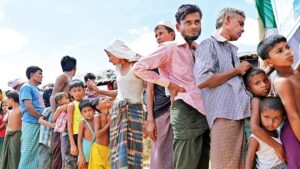 UNHCR focuses on protection needs and conducts registration and RSD, promoting solutions and self-reliance. As of date, 17,933 Sri Lankan refugees returned voluntarily with UNHCR’s assistance (based on UNHCR records from 2002 to February 2022).
UNHCR focuses on protection needs and conducts registration and RSD, promoting solutions and self-reliance. As of date, 17,933 Sri Lankan refugees returned voluntarily with UNHCR’s assistance (based on UNHCR records from 2002 to February 2022).
The UNHCR India office covers the Maldives, where it works closely on capacity-building efforts, inclusion, and the international protection needs of those forced to flee.
Today, India hosts refugees from Tibet, Sri Lanka, Myanmar, Afghanistan, and in much smaller numbers from Somalia and Palestine.
Problems Faced by Refugees:
Refugees face a multitude of challenges and difficulties as they flee their home countries and seek safety in foreign lands. These challenges can be both immediate and long-term, impacting various aspects of their lives. Here are some of the problems faced by refugees:
Displacement and Loss: Refugees often leave their homes with little or no belongings, losing their homes, land, possessions, and sometimes even their loved ones. This displacement can lead to trauma, grief, and a sense of disconnection from their cultural and social roots.
Lack of Safety and Security: Refugees often experience significant threats to their personal safety and security, both during their journey and in their host countries. They may face violence, exploitation, discrimination, and gender-based violence, which further exacerbates their vulnerability.
Limited Access to Basic Needs: Many refugees struggle to access basic necessities such as food, water, shelter, and healthcare. In overcrowded refugee camps or informal settlements, the living conditions may be substandard, lacking proper sanitation, hygiene facilities, and adequate healthcare services.
Education Barriers: Refugee children and youth often face significant barriers to education. Access to schools may be limited or unavailable, language barriers may impede learning, and the lack of financial resources for school fees and supplies can hinder their educational opportunities, perpetuating a cycle of disadvantage.
Healthcare Challenges: Refugees may encounter challenges in accessing healthcare services, including limited availability of medical facilities, language barriers, and lack of financial resources. They may also face health issues resulting from the trauma of displacement, malnutrition, and exposure to unsanitary conditions during their journey.
Legal and Administrative Obstacles: Refugees often face complex legal and administrative processes in their host countries. Obtaining legal documentation, such as refugee status recognition or work permits, can be challenging, limiting their access to employment, social services, and legal protection.
Economic Integration and Employment: Finding employment and achieving economic self-sufficiency can be difficult for refugees. Language barriers, lack of recognized qualifications, discrimination, and limited job opportunities in host countries pose significant obstacles to their economic integration.
Social Exclusion and Discrimination: Refugees often experience social exclusion, prejudice, and discrimination, both within host communities and in the broader society. Negative perceptions, stereotypes, and xenophobia can hinder their integration, limit social interactions, and perpetuate marginalization.
Mental Health and Psychosocial Challenges: The experiences of conflict, displacement, and loss can have profound impacts on refugees’ mental health and psychosocial well-being. Post-traumatic stress disorder (PTSD), anxiety, depression, and other mental health issues are prevalent among refugees, necessitating access to appropriate support and services.
Uncertainty and Lack of Durable Solutions: Many refugees face a prolonged state of uncertainty regarding their future. They may have limited options for durable solutions, such as voluntary repatriation, local integration, or resettlement in a third country, leaving them in a state of limbo.
Addressing these challenges requires comprehensive approaches that involve the international community, governments, humanitarian organizations, and local communities. Efforts should focus on providing immediate humanitarian aid, ensuring access to basic services, promoting education and skill development, addressing legal barriers, fostering social inclusion, and prioritizing mental health and psychosocial support for refugees. Ultimately, durable solutions that address the root causes of displacement and promote peace and stability in their home countries are crucial for a sustainable resolution to the refugee crisis.
The 1951 Refugee Convention:
The 1951 Convention relating to the Status of Refugees is an international treaty that provides the legal framework for the protection and rights of refugees. It defines who qualifies as a refugee and outlines the responsibilities of nations to ensure their protection. Here is an overview of the Convention, including its history:
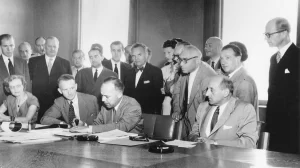 Historical Background: The Convention was adopted on July 28, 1951, at the United Nations Conference of Plenipotentiaries on the Status of Refugees and Stateless Persons held in Geneva, Switzerland. It was a response to the large-scale displacements caused by World War II and aimed to establish international standards for the protection of refugees.
Historical Background: The Convention was adopted on July 28, 1951, at the United Nations Conference of Plenipotentiaries on the Status of Refugees and Stateless Persons held in Geneva, Switzerland. It was a response to the large-scale displacements caused by World War II and aimed to establish international standards for the protection of refugees.
Definition of a Refugee: The Convention defines a refugee as an individual who, “owing to a well-founded fear of being persecuted for reasons of race, religion, nationality, membership of a particular social group, or political opinion, is outside the country of their nationality and is unable or unwilling to avail themselves of the protection of that country.”
Core Principles: The Convention enshrines several fundamental principles, including the principle of non-refoulment, which prohibits the expulsion or return of refugees to a country where their life or freedom would be at risk. It also establishes the principle of non-discrimination, ensuring that refugees receive treatment on par with nationals in terms of basic rights and access to courts, education, and public assistance.
Legal Obligations: The Convention outlines the legal obligations of signatory states towards refugees. These include providing refugees with legal documentation, ensuring their physical safety and security, granting access to courts, facilitating their access to employment, education, and healthcare, and promoting their integration into society.
Exclusions and Cessation: The Convention specifies certain exclusions, such as those who have committed serious crimes or pose a threat to national security. It also includes provisions for the cessation of refugee status, such as if the circumstances that led to the refugee status have ceased to exist.
Expanded Protection: Over time, the Convention’s scope has been broadened through additional legal instruments and regional agreements. For example, the 1967 Protocol to the Convention removed the temporal and geographical limitations of the original Convention, making its provisions applicable to refugees beyond the 1951 timeframe and outside Europe.
Global Significance: The Convention has been widely ratified and has become the cornerstone of international refugee law. As of my knowledge cutoff in September 2021, had 149 state parties. The Convention’s principles and standards also influenced the development of regional refugee frameworks, such as the OAU Convention and the Cartagena Declaration.
The 1951 Refugee Convention remains a vital legal instrument for the protection of refugees globally. It sets standards for the treatment of refugees, ensures their access to basic rights, and promotes international cooperation in addressing the challenges of displacement. However, the evolving nature of forced displacement and new challenges faced by refugees necessitate ongoing efforts to strengthen and adapt the framework to effectively address contemporary issues and protect the rights of refugees worldwide.
Measures taken to provide help:
Globally, various measures are undertaken to provide assistance and support to refugees. These measures involve a range of stakeholders, including governments, international organizations, humanitarian agencies, and civil society. Here are some key actions taken to help refugees:
Humanitarian Aid and Emergency Response: When a refugee crisis emerges, immediate humanitarian aid is crucial. Governments, international organizations like the United Nations High Commissioner for Refugees (UNHCR), and humanitarian agencies provide emergency relief, including food, water, shelter, healthcare, and sanitation facilities. They work to address the urgent needs of refugees and ensure their basic survival.
Protection and Legal Frameworks: Governments and international bodies work together to establish legal frameworks and policies that protect the rights of refugees. This includes ensuring access to legal documentation, granting refugee status, and implementing the principles of non-refoulement, non-discrimination, and access to justice. International organizations provide technical support and guidance to help countries adhere to these standards.
Refugee Camps and Temporary Shelters: Refugee camps and temporary shelters are established to provide a safe space for refugees. These locations offer basic services, such as food distribution, healthcare, and education facilities. Humanitarian organizations and governments collaborate to manage these sites, addressing the immediate needs of refugees while seeking long-term solutions.
Education and Skill Development: Education plays a crucial role in empowering refugees and enabling them to rebuild their lives. Governments and organizations strive to provide education opportunities for refugee children and youth, establishing schools in camps and host communities. Vocational training programs and skill development initiatives are also implemented to enhance refugees’ employability.
Healthcare and Mental Health Support: Ensuring access to healthcare services is essential for refugees. Governments and humanitarian agencies collaborate to establish health centres and clinics and provide medical care, immunizations, and reproductive health services. Mental health and psychosocial support programs are implemented to address the trauma and psychological well-being of refugees.
Livelihood and Economic Integration: Facilitating the economic integration of refugees is crucial for their self-reliance and long-term stability. Governments and organizations implement initiatives to enhance refugees’ access to livelihood opportunities, entrepreneurship programs, vocational training, and microfinance support. They also engage with local communities to promote social cohesion and mitigate potential tensions.
Resettlement and Third-Country Solutions: Some refugees, particularly those in protracted situations or facing specific risks, may be eligible for resettlement to a third country. Governments, along with the UNHCR and other organizations, coordinate efforts to identify eligible refugees and facilitate their resettlement. Resettlement countries provide refugees with the opportunity to rebuild their lives in a safe and secure environment.
Advocacy and Awareness: Raising awareness about refugee issues is crucial to generate support and mobilising resources. Advocacy campaigns, media outreach, and community engagement efforts aim to dispel misconceptions, promote empathy, and advocate for the rights and protection of refugees. This also involves engaging with governments, civil society, and the private sector to foster inclusive policies and practices.
International Cooperation and Funding: Addressing the needs of refugees requires international cooperation and financial support. Governments, international organizations, and donor countries collaborate to mobilize resources, provide funding, and coordinate efforts. Global platforms and conferences are held to discuss challenges, share best practices, and strengthen cooperation in addressing the global refugee crisis.
These measures collectively work towards providing assistance, protection, and durable solutions for refugees. However, ongoing challenges such as protracted displacement, limited resources, and political complexities necessitate sustained efforts and increased global solidarity to effectively address the needs and rights of refugees worldwide.
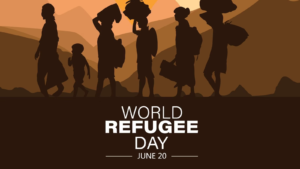 The challenges faced by refugees are immense, ranging from displacement and loss to limited access to basic needs, education, and healthcare. However, efforts have been made globally to address these challenges. Measures taken include providing humanitarian aid, establishing legal frameworks, creating refugee camps, promoting education and skill development, ensuring healthcare and mental health support, facilitating economic integration, exploring resettlement options, advocating for refugees’ rights, and fostering international cooperation. The 1951 Refugee Convention stands as a crucial legal instrument that defines and protects the rights of refugees. While progress has been made, ongoing commitment, resources, and collaboration are essential to effectively support refugees, ensure their well-being, and pursue durable solutions to the global refugee crisis.
The challenges faced by refugees are immense, ranging from displacement and loss to limited access to basic needs, education, and healthcare. However, efforts have been made globally to address these challenges. Measures taken include providing humanitarian aid, establishing legal frameworks, creating refugee camps, promoting education and skill development, ensuring healthcare and mental health support, facilitating economic integration, exploring resettlement options, advocating for refugees’ rights, and fostering international cooperation. The 1951 Refugee Convention stands as a crucial legal instrument that defines and protects the rights of refugees. While progress has been made, ongoing commitment, resources, and collaboration are essential to effectively support refugees, ensure their well-being, and pursue durable solutions to the global refugee crisis.


